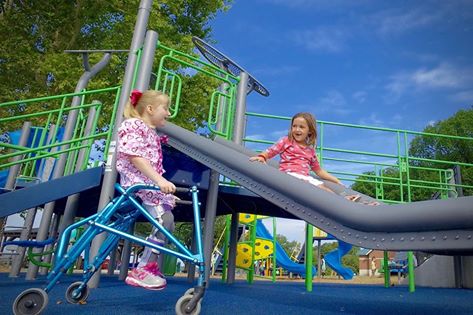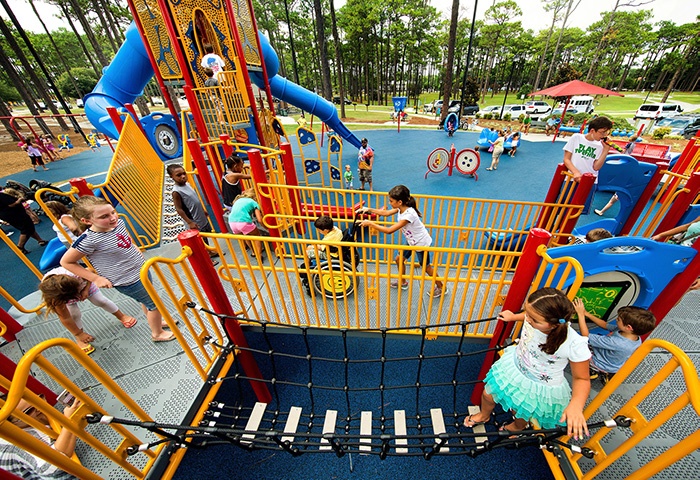When discussing playground projects, it’s important to fully understand the difference between accessible and inclusive playgrounds. Although the two terms are sometimes used interchangeably, they mean different things. An accessible playground is usable by children of all ages and abilities, while an inclusive playground encourages participation by children with disabilities.
If you are responsible for a commercial playground design, it’s important to consider who will be using the park and how you can accommodate their needs and interests. Here is everything you need to know regarding the differences between accessible and inclusive playgrounds.
Accessible Playgrounds

Accessible playgrounds go beyond ADA to ensure that everyone can get to and through the playground. Accessibility is about travel, movement and approach or entry. So, a playground that is accessible is one that is easy for a person who uses a mobility device to maneuver to and around.
An accessible park or playground has no barriers that would prevent someone with disabilities from accessing the equipment. All children can navigate the landscape and use the equipment safely. For example, an accessible playground will have a transfer station and ADA-approved safety surfacing. It may or may not include ramps. In addition, there will also be a certain number of play events that are accessible by ground vs elevated play components.
If your primary concern is to build a playground that meets ADA regulations, an accessible playground will get the job done. Your playground will be in compliance with the ADA guidelines and provide a safe place for children of all ages and abilities to play.
Inclusive Playgrounds

An inclusive playground takes things a step further by encouraging engagement and participation by children of all ages and abilities. So, it’s not just about accessibility, but to encourage children to engage with one another. Ramps, in and of themselves, do not lead to engagement. It takes more than just getting them to the playground.
When one looks at an accessible playground, it is obvious that it was designed with people with special needs in mind. When one looks at a well-designed inclusive playground, it is not as obvious. Inclusive playgrounds are designed to meet the needs of children with a variety of abilities – children who use wheelchairs or other mobility devices, have autism or are typically developing. The benefit in designing an inclusive playground is that it complies with ADA regulations while including a variety of play equipment that encourages parallel play, inclusion and engagement between children of all ages and abilities providing a sensory-rich experience.
Work with CR Studio Design for a Research-based Approach to Inclusive Design
Me2®, 7 Principles of Inclusive Playground Design® was developed in partnership with Utah State University, Center for Persons with Disabilities, PlayCore offers a comprehensive design program for creating play environments for people of all ages and abilities and creating inclusive communities through play. The program defines 7 principles of inclusive playground design that strive to create a truly inclusive and embracing play experience to meet the developmental needs of the whole child by intentionally providing opportunities for physical, cognitive, communicative, social/emotional, and sensory development.
CR Studio Design has extensive experience and can assist you in designing an inclusive playground based on research using the 7 Principles of Inclusive Design®. Contact us today for more information regarding Me2®, 7 Principles of Inclusive Playground Design® or to learn more about inclusive outdoor recreation spaces.
